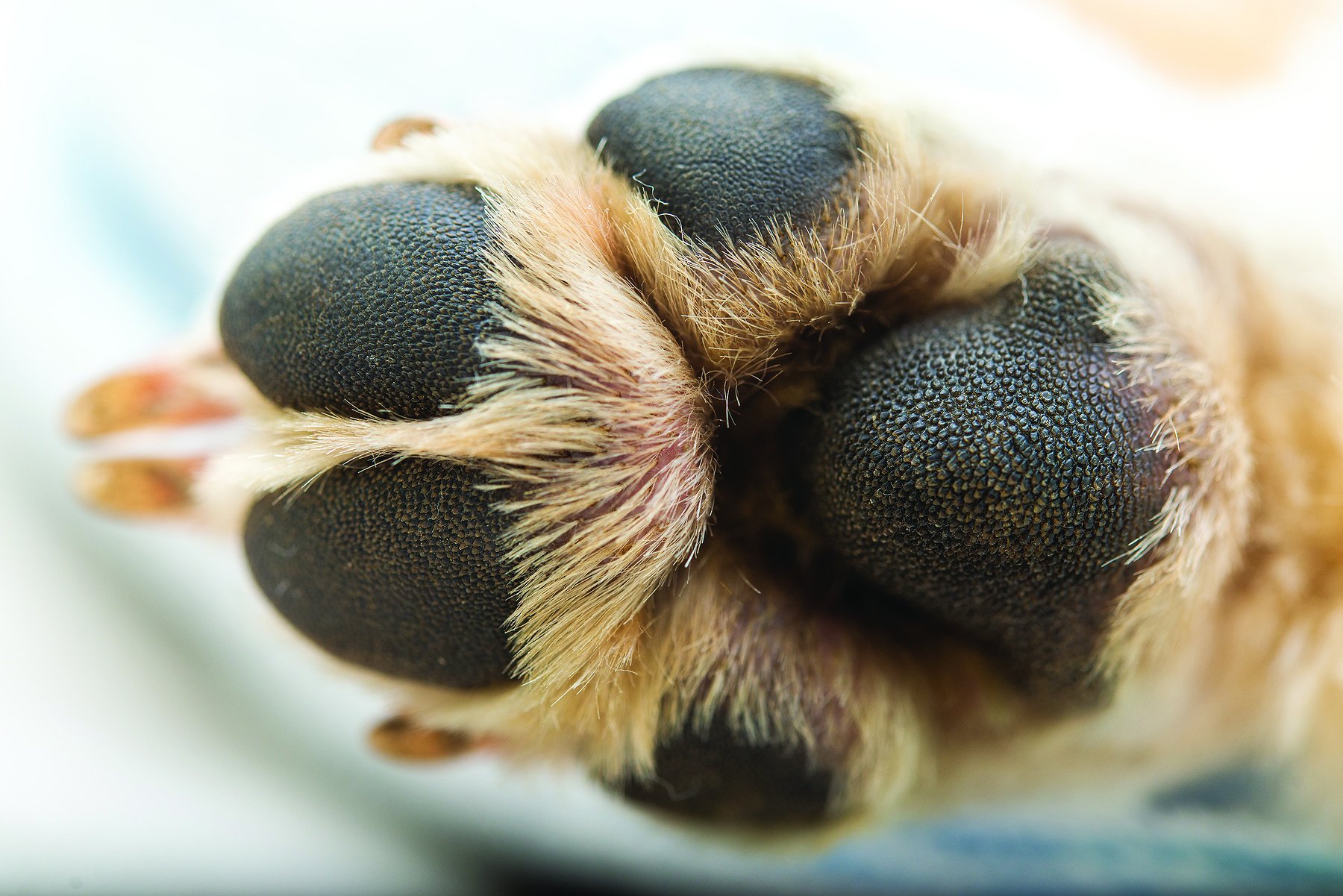Talk to the paw: The necessity of paw pads
Coeur d'Alene Press | UPDATED 4 months, 4 weeks AGO
Whether you see your pet’s footprints on the hood of your car, in the sand on the beach or in a light blanket of snow, the indentions left behind by our furry friends’ paw pads are adorable.
While we most often associate paw pads with cute critter prints, they’re also vital to our pets’ survival and play, an essential function in their daily lives.
Dr. Christina Gentry, a clinical assistant professor at the Texas A&M College of Veterinary Medicine and Biomedical Sciences, sheds light on the features and uses of the paw pads on our beloved furry family members.
A paw’s purpose
Paw pads are the cushioned surface of an animal’s paw that are in continuous, daily use.
The purpose of a pet’s paws goes deeper than surface level. Gentry explained that paws have three layers that, together, provide protection from bacteria, viruses and fungi; support movement and strengthen the paw; and absorb shock, thus making walking or running less painful and more quiet.
The necessity for paw pads stems from their various uses, including balance, traction, prey vibration detection, terrain protection and temperature regulation.
“During temperature regulation, dogs and cats can lose heat through the paw pads, which is why we may consider wrapping or insulating them during anesthetized procedures,” Gentry said. “With their limited ability to truly sweat — because their true sweat glands are located in few body areas — most thermoregulation is done via panting, ear flaps and coat length, color or type.”
For example, during a morning run, paw pads are put to work with sweat glands that secrete substances that improve traction during exercise and play an important role in scent marking.
Built different
Despite their similar appearance, cats and dogs have different paw pad anatomy, the most obvious difference being the potential of larger, canine-sized paws.
Other features that separate the two is a cat’s ability to retract their claws when needed, as well as the more-rounded overall shape of a cat’s paws compared to a dog’s oval-shaped paws.
When cats and dogs walk on their paws, they bear weight on the balls and the tips of their toes, whereas humans are supported by the balls and heels of our feet. This allows both cats and dogs to walk more quietly than humans, but especially cats when they’ve retracted their claws.
Knowing the unique anatomy of our furry friends’ paws can help us better care for and improve our pets’ overall health.
In a world without shoes
Walking around barefoot brings forth the immediate caution of stubbed toes and splinters, yet this risk is a daily occurrence for our furry friends.
Because dogs and cats walk on their toes, all of their body weight is supported by a very small area. This means that even slight damage to a paw pad can cause a noticeable change in our pets.
“Threats to paw pads can include traumatic foreign bodies (like sharp plant material); a cut or slice from walking on sharper rocks or slipping on surfaces (remember that a lot of weight is pressed into these small pads as they walk); and a rug burn-like injury from excessive exercise on rough terrain such as tennis courts, agility courses and gravel trails,” Gentry said.
Gentry also points out that the summer heat is a threat to the well-being of paw pads.
“In dogs, we see this more in the summer when the asphalt and cement are much hotter than the ambient temperature,” Gentry said. “I usually use the ‘back of hand’ rule, where if the ground is too hot for the back of my hand to contact, it may be too hot for a dog’s paws. Cats can get burns on the paw pads (more often in cooler climates/months) from getting under the hoods of cars to keep warm and standing on the engine block.”
Because paw pads are essential to our canine and feline companions’ outside adventures and overall enjoyment of life, it should be a priority to safeguard them against potential harm.
“Pet owners should access their pet’s walking terrain routinely and take breaks to look at the paws,” Gentry said.” “If there is any sign of discomfort — limping, slowing down, licking at paws — the pet should be taken home to rest and potentially to a veterinarian if there are sores, cuts or active bleeding.”
Safeguarding paw pads is crucial for pets, especially when it comes to their playtime and daily adventures by their owner’s side.
•••
Pet Talk is a service of the School of Veterinary Medicine and Biomedical Sciences, Texas A&M University. Stories can be viewed on the web at vetmed.tamu.edu/news/pet-talk. Suggestions for future topics may be directed to vmbs-editor@tamu.edu.
 Cats and dogs have different paw pad anatomy, the most obvious difference being the potential of larger, canine-sized paws. Other features that separate the two is a cat’s ability to retract their claws when needed, as well as the more-rounded overall shape of a cat’s paws compared to a dog’s oval-shaped paws.
Cats and dogs have different paw pad anatomy, the most obvious difference being the potential of larger, canine-sized paws. Other features that separate the two is a cat’s ability to retract their claws when needed, as well as the more-rounded overall shape of a cat’s paws compared to a dog’s oval-shaped paws.




